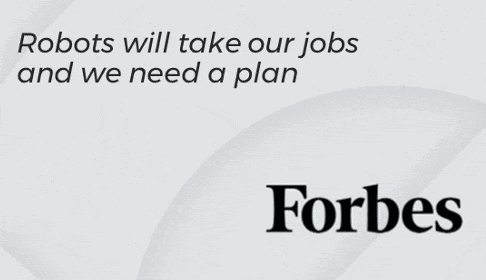Trait #1: They Talk About Their Ideas
A lot of ‘wannabe’ entrepreneurs will spend too long jealously and secretively protecting their ideas. They are afraid their ideas will get shot down by people when they talk about them, they’re afraid people will steal them and they generally end up not telling anyone about them as a result.
This is a mistake as we’ll see – as there are HUGE benefits to talking to people about your idea.
In his great TED talk ‘Where good ideas come from’, speaker Steven Johnson describes an alternative narrative for where we get our best ideas from. Rather than striking us from the blue and causing us to jump up and shout ‘Eureka!’, Johnson suggests that most good ideas take a while to gestate and don’t arrive fully formed.
The best way to have a great idea then, is to mull over a problem for an extended period of time. Write it down when you have the germination of something that could work and then keep returning to it and iterating upon it.
Better yet, try speaking with other people. When we talk to others, it not only gives us access to their point of view and ideas (there’s the ‘crowd’ again) but it also helps us to better contextualize our own ideas. There is something valuable about saying an idea out loud and seeing how it sounds and imagining it from the perspective of others. Conversations flow and they bounce around from topic to topic and this helps to encourage that exploration of ideas that ultimately leads to novel combinations.
Don’t be jealously private about your idea – be open with it, talk about it and share it with your team. This is the best way to help it grow and turn into something amazing.
Do you really think that Steve Jobs invented the iPad on his own?
Trait #2: But They Don’t Talk Too Much
That said, you should also be wary of talking too much. This is one of the biggest warning signs that an ‘entrepreneur’ is actually a ‘wantrepreneur’. They are doing what some people call ‘playing business’.
This is the kind of person who spends a huge amount of time discussing their ideas, designing logos, holding meetings and planning their launch parties. They’re dragging their heels rather than getting on with actually creating their product or service. But it’s not because they are afraid to go live – it’s because they are just enjoying the song and dance of having an exciting idea. They waste everyone’s time with meetings and ultimately, they’re more interested in wearing suits than they are in making the idea happen.
On the other hand, the real entrepreneur simply gets on with it and puts their idea into action.
Trait #3: They Are Not Afraid to Think Big
Too many people think that they can’t aim big with their business ideas. They are afraid that if they tell people that their plan is to go to space, they’ll just get laughed out of the room! Likewise, for coming up with a plan to make a virtual reality headset.
Reality check: two of the most successful entrepreneurs in recent times (Elon Musk and Palmer Luckey) have built their businesses around these two ideas!
As Tim Ferris points out, it’s actually often easier to get attention for a big idea. Why? Because it’s so bombastic and so new that people sit up and they pay attention where otherwise they might have not cared. People want to be involved in something bigger than themselves. Why do you think that the Kickstarter for the Oculus Rift was so incredibly successful?
Finally, consider a technique called the ‘step-back’ technique. The idea is that you are always taking one step back from what it is you want to accomplish. In other words, you come up with an idea for something you want to invent that could change the world and you hold nothing back. You imagine what the product or service you’d be most excited for would be in a perfect future.
From there, you ask yourself how you could make that possible. Chances are that it won’t be possible. A phone that never runs out of power? Not possible. A projector like the one used in Star Wars? Not possible. But then you ask what is possible and what could come the closest to emulating the same effects.
In the former example, you have something like a solar powered phone charger/case. Or perhaps you could take something like the excellent ‘Crank’ iPhone case that showed up on iOS. This is a phone case that allows you to recharge the battery by turning a crank by hand to generate kinetic energy! For the hologram, the answer would be something like Microsoft’s highly exciting forthcoming HoloLens.
This type of thinking forces you to overcome limitations and to get inventive and can lead to real innovation. By thinking big, you can come up with ideas that other people haven’t even entertained, and you can make real breakthroughs as a result!
Let’s consider Elon Musk: here’s a guy whose end game is to colonize Mars and to rid the planet of its reliance on fossil fuels. Not exactly modest aims, but it seems to be working for the guy!
Trait #4: They Know When to Work with Others
Speaking of Elon Musk and his big ideas, this is a perfect example of how having a big idea can generate excitement and help you to make a splash.
Because when Musk came up with the notion of SpaceX, he had no clout behind his name and no prior experience. How would this ‘nobody’ gain serious interest in his competition to develop a spacecraft? He didn’t even have the money to put behind the idea!
The solution was simple: he found serious people within the industry that would give the presentation with him. He found ambassadors that lent his idea credibility and that was enough to ensure that backers would cough up the prize money.
This is an example of an entrepreneur recognizing their own limitations and knowing how to get around them by working with others. Likewise, you should also think of all the other ways that you can get around your own limitations with the help of others. Don’t know how to program your website or app? Hire someone. Not a great graphic designer? Hire someone.
Trying to do everything yourself is a big mistake as it will not only waste your time but also result in a less high-quality product than if you had used professionals. Know when to work with others and don’t try and do everything yourself!
Trait #5: They Take Precautions
Many people think that it requires a lot of guts and risk-taking to be an entrepreneur. This is true to an extent but it doesn’t mean you should be reckless. In fact, a good entrepreneur will always have contingencies and backup plans to mitigate risk.
One way to do this for example, is to be less of a perfectionist and to keep the costs of developing your idea to a minimum before you start profiting.
This might involve creating what you would call an ‘MVP’ (a ‘Minimally Viable Product’). The aim here is to offer something that is unpolished and that has zero bells and whistles. In the case of an app or a website designed to offer a crowd-based service, this might mean that you do handle the design work yourself and settle for something relatively ‘ugly’. In the case of a product, it might mean that you quickly put together something that is cheap to make and that has no attractive packaging etc.
The reason this is a good idea, is that it allows you to test and see if there’s an audience for your product before you spend more time, money and effort on it. If the MVP starts selling a little, then you know there’s interest and you develop it further into some perfect. If the project doesn’t work out, then you simply move on to the next one – no harm done!
This way you can ‘throw lots of paint at the wall and see what sticks. Become the ‘lean startup’ and don’t spend too long on an idea that you haven’t verified. Likewise, you aren’t taking a huge risk by investing countless hours and huge amounts of money into an idea that might not work.
A similar strategy is to first ‘validate’ an idea, which means that you try to sell it before it is ready. If you find buyers who would have paid for the service or product, then you can invest the time necessary to make it!
Then again though, it does also take a lot of courage to be a successful entrepreneur or visionary. You need to have the resilience to fail and to get back up and the thick skin to not care when other people ask what exactly you’re doing!
Trait #6: They Can Spot Opportunities
Of course, all of this would be a little moot if you didn’t have an idea to sell in the first place. Now I’m not going to say that all entrepreneurs are true innovators and visionaries. Some are, sure. But others are lucky, and others still are just savvy.
Either way, the key skill to cultivate here is the ability to spot an opportunity and to milk it. That means looking for gaps in the market. Looking for things that don’t exist yet but should and looking for ways to reach the right audience.
This is a skill that you can cultivate by asking the right questions: how could X be better? What is Y missing? What happens if you combine X and Y into one thing?
Otherwise, it might mean scratching an itch of your own or solving a problem in your own business or daily life.
And this ability to spot opportunities does not only help you to create the idea in the first place – it’s also what will help you find unique ways to market it, to get funding or to grow it.
Trait #7: They Are Passionate
A true entrepreneur needs to be passionate about what they do to be successful and this is actually one of the biggest reasons that a lot of wannabe businesses fall flat.
Have you ever had an idea for something that you think is good but that you don’t know much about? Maybe you’ve thought of a way to dry gym clothes, or a way to stop oil spitting everywhere when you cook steak.
Problem is, you may not be excited for that idea. In that case, you may want to patent the idea and license it but do not spend the next two years of your life building a business around it. People who come up with innovative ideas but that don’t really care about them or aren’t really interested in them are destined to lose interest before they become anything big.
Conversely, if you’re passionate about your projects, if you know how to talk the talk and if people can tell that you really believe in what you are selling, then you’ll find that it’s much easier to get people behind you and to get others as excited as you are.
In short, it’s no good having a good idea if you aren’t excited by it. Follow your passion and that’s how you’ll change the future.











